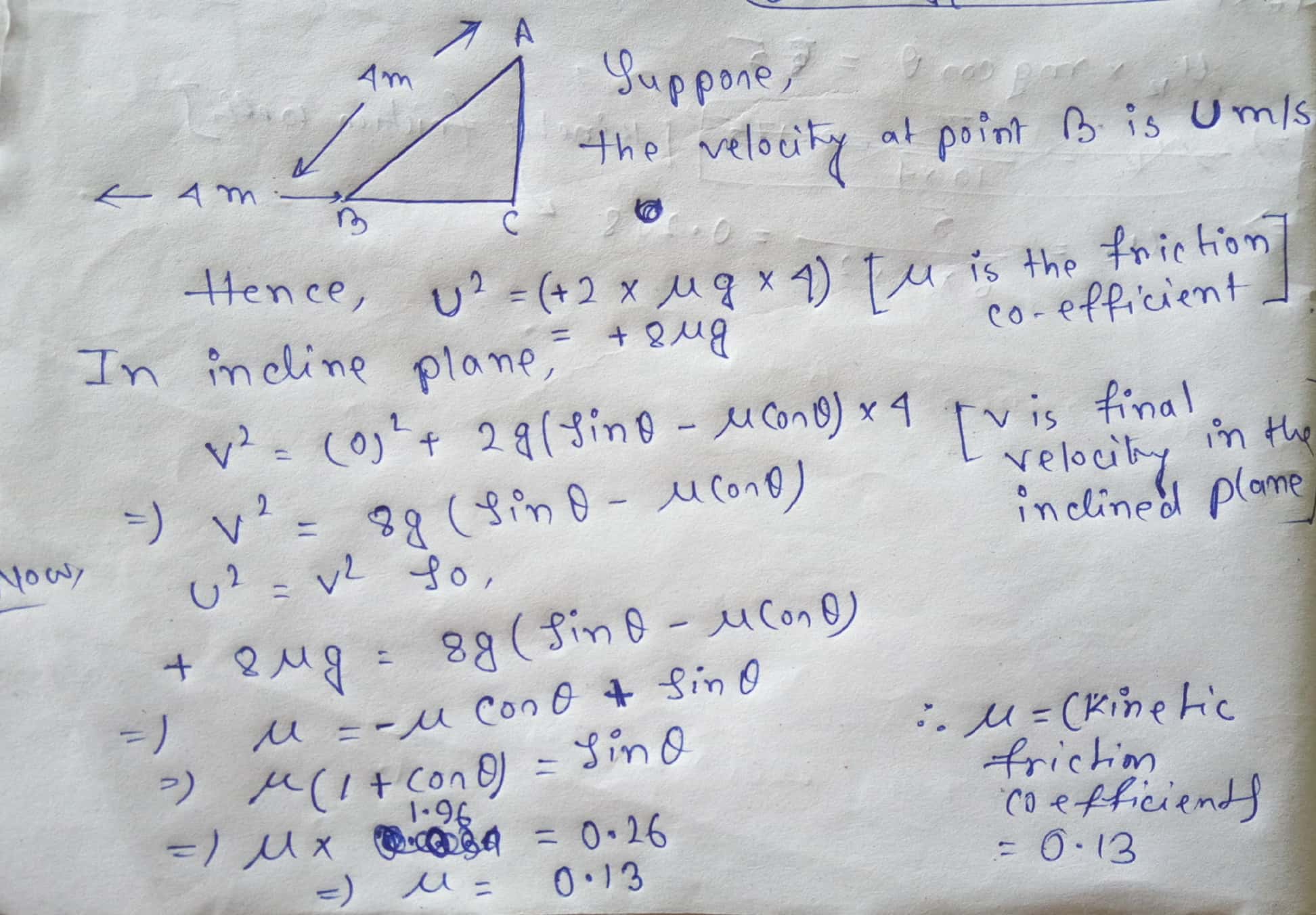An object, previously at rest, slides #4 m# down a ramp, with an incline of #pi/12 #, and then slides horizontally on the floor for another #4 m#. If the ramp and floor are made of the same material, what is the material's kinetic friction coefficient?
2 Answers
The kinetic friction coefficient is
Explanation:
My explanation is as below. For any problem about the picture please notify me.

Explanation:
Another approach, making use of the work-energy theorem...
Since the object begins from rest at the top of the ramp and comes to rest on the floor below, we know that all of the gravitational potential energy originally possessed by the object has been lost to friction by the time it comes to a stop. Therefore, we know that the work done by friction, or the energy lost to friction, is equal to the object's gravitational potential energy at the top of the ramp.
#U_g=mgh#
#mgh=W_f#
#mgh=vecf_k*d#
It is necessary to break up the right side into a sum of the work done by friction while the object is on the ramp as well as when it is sliding across the floor. Let's call the distance down the ramp
#mgh=vecf_kd+vecf_kr#
#mgh=mu_kvecnd+mu_kvecnr#
We can find
#sin(pi/12)=h/4#
#h=4sin(pi/12)#
Now let's take inventory of the forces acting on the object while on the ramp and the floor.
Ramp:
#sumvecF_x=F_gsin(theta)-f_k=ma#
#sumvecF_y=n-F_gcos(theta)=0# Note that there is no net perpendicular (y) force and therefore no acceleration in that direction (dynamic equilibrium)
We can solve for n:
#n=F_gcos(theta)#
#=mgcos(theta)#
Floor:
#sumvecF_x=-f_k=ma#
#sumvecF_y=n-F_g=0#
Again, we can solve for n, and we find that
Substituting back in...
#mgh=mu_kmgcos(theta)d+mu_kmgr#
#cancelcolor(purple)(m)cancelcolor(blue)(g)h=mu_kcancelcolor(purple)(m)cancelcolor(blue)(g)cos(theta)d+mu_kcancelcolor(purple)(m)cancelcolor(blue)(g)r#
#h=mu_kcos(theta)d+mu_kr#
Solve for
#h=mu_k(cos(theta)d+r)#
#mu_k=h/(cos(theta)d+r)#
And now, substituting in our known values:
#mu_k=(4sin(pi/12))/(4cos(pi/12)+4)#
#mu_k~~0.13#
I give a more detailed explanation of a similar problem here if you would like elaboration on any of the above steps or concepts.


